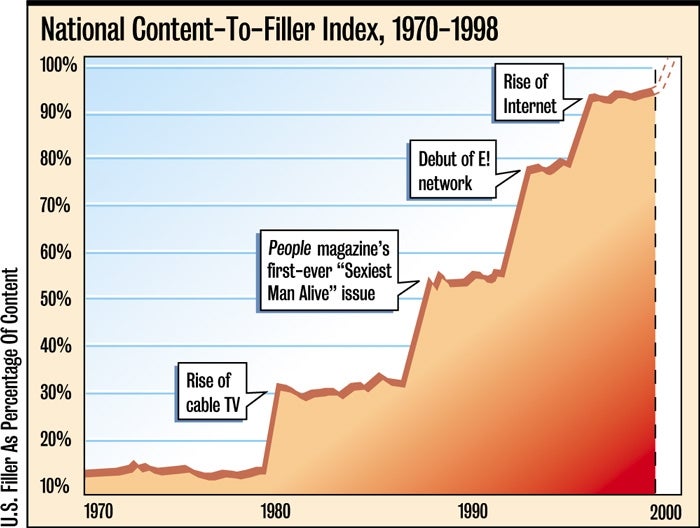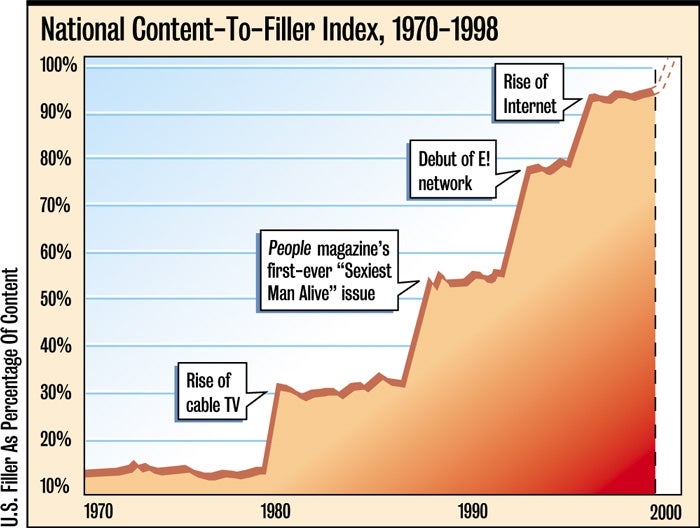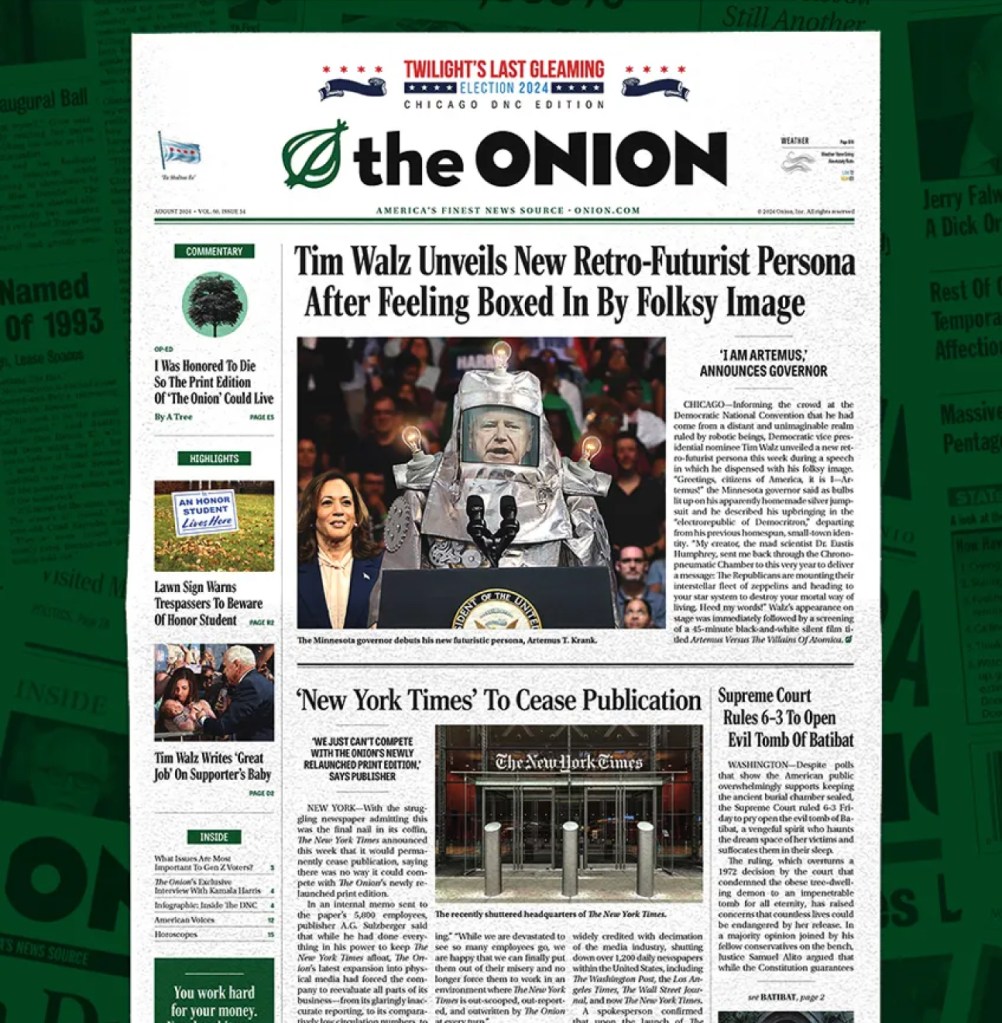WASHINGTON, DC—According to a report issued Monday by the General Content-Assessment Office, the National Content-To-Filler Index (NCFI) currently stands at 85.5 percent. Representing a 22 percent increase from just three years ago, the current NCFI figure is the highest in U.S. history.

Experts attribute the startling statistic to the rapid growth of new media—including cable television, satellite-direct television and electronic media–which rely heavily on filler to provide space-filling content.
“Such cable programs as Talk Soup, Loveline and My Generation, as well as virtually the entire line-up of networks like The Learning Channel and USA Network, consist of upwards of 98 percent filler and would literally not exist without it,” said Janet Rybeck, director of Princeton University’s Center For Media Studies. “And with the number of channels increasing every day, there is a greater need for filler than ever before.”
“Also, keep in mind that cable filler is nothing compared to that of some of the newer media,” Rybeck said. “Have you seen some of the stuff that’s on the Internet?”
Despite the blame laid on new media, more established media like network television and print publications are running record amounts of filler-heavy content, as well. Cited in the report was the new high achieved by People magazine several weeks ago, when it ran not only photos of celebrities in gala Oscar-night gowns, but also photos of gown-wearing Entertainment Tonight and Access Hollywood correspondents covering the Oscar festivities for their respective shows’ celebrity-fashion segments.
“Filler has grown to such epic proportions that, today, the infamous water-skiing squirrel that padded out programs such as Real People and Those Amazing Animals in the 1970s would practically constitute legitimate, substantive content in its own right,” the report stated.
Even in a cultural climate that has become inured to high content-to-filler ratios in recent years, the latest federal statistics are raising eyebrows. “Americans have become increasingly tolerant of filler, to be sure. Nonetheless, 85 percent is alarming,” said Senate Content-Appraisal Subcommittee chairperson Sen. Sam Brownback (R-KS). “Can we as a nation sustain ourselves on so little substance much longer? I have my doubts.”

Despite the concern of federal authorities, those within the nation’s content-generating industries see no cause for alarm.
“A little filler never hurt anybody,” said Warren Littlefield, president of NBC, the nation’s third largest producer of filler. “To the average person, 85 percent might sound high, but those of us who understand the realities of the content-manufacturing business have been aware of the rising filler numbers for decades. These numbers merely reflect that long-term trend.”
According to Littlefield, filler plays an important role in the content-production process. “In any given piece of content, filler serves the important function of accentuating, by way of contrast, the quality portions [of that content]. Filler helps everyone make everything else look good.”
For years, federal legislators have sidestepped the issue of filler overproduction, fearful of invoking the wrath of the powerful filler lobby. Nevertheless, some in Congress have responded to the latest statistics by calling for a entertainment cap that would establish limits for annual entertainment output by U.S. content producers. Such a cap, they argue, would not necessarily require any decrease in the amount of filler currently being produced, but would merely offset this filler by encouraging a general increase in the development of non-filler material, with the intended result of lowering the overall filler-to-substance ratio in the long run.
“I want to make it clear that I have nothing against filler as a content-padding tool,” said U.S. Rep. Scott Klug (R-WI), chair of the House Content Regulatory Committee. “In fact, this very speech I am reading to you now consists of over 30 percent filler, and I applaud that. The purpose of setting limits is not to eliminate filler in the media altogether. Rather, the purpose is merely to get people within the industry thinking about other forms of content the American people might also enjoy, such as, say, ideas.”
Responding to Klug and other such legislators in a speech at the National Press Club, Ted Turner, CEO of filler-industry giant TNT, said he remains unconvinced that such limits are necessary.
“Filler is a booming growth industry right now, so, no, we at TNT will not scale back our ambitious plans for new filler production as of this time,” Turner said. “The year 1998 promises to be our biggest yet, with enormous quantities of filler currently in the production stages and still more going through the development process. We’ve got some filler in the works right now that we’re really excited about and have very high hopes for. This is an exciting time to be in the business of creating filler.”
Turner went on to pad out his speech with inconsequential rhetoric for an additional eight minutes before concluding.








